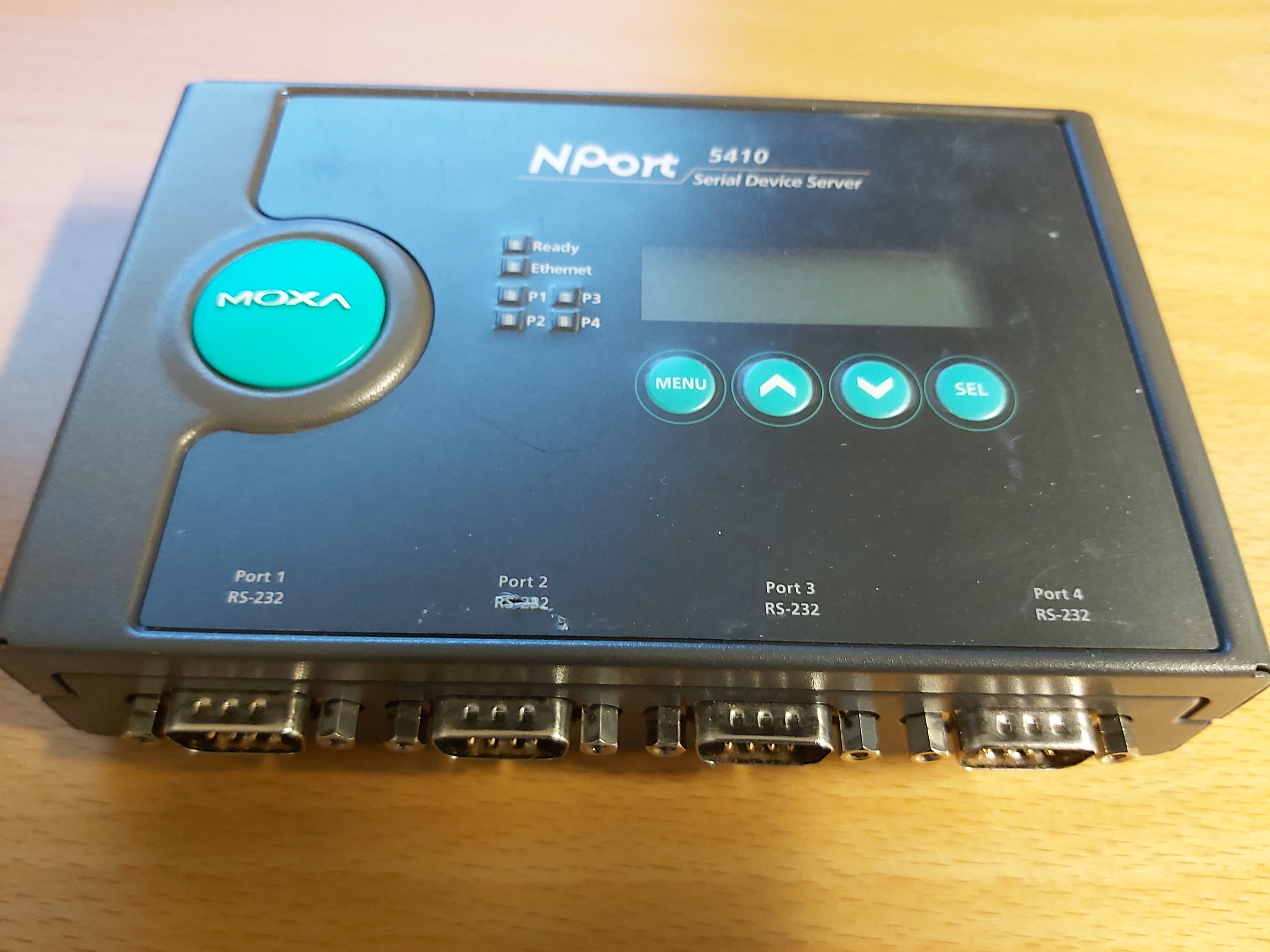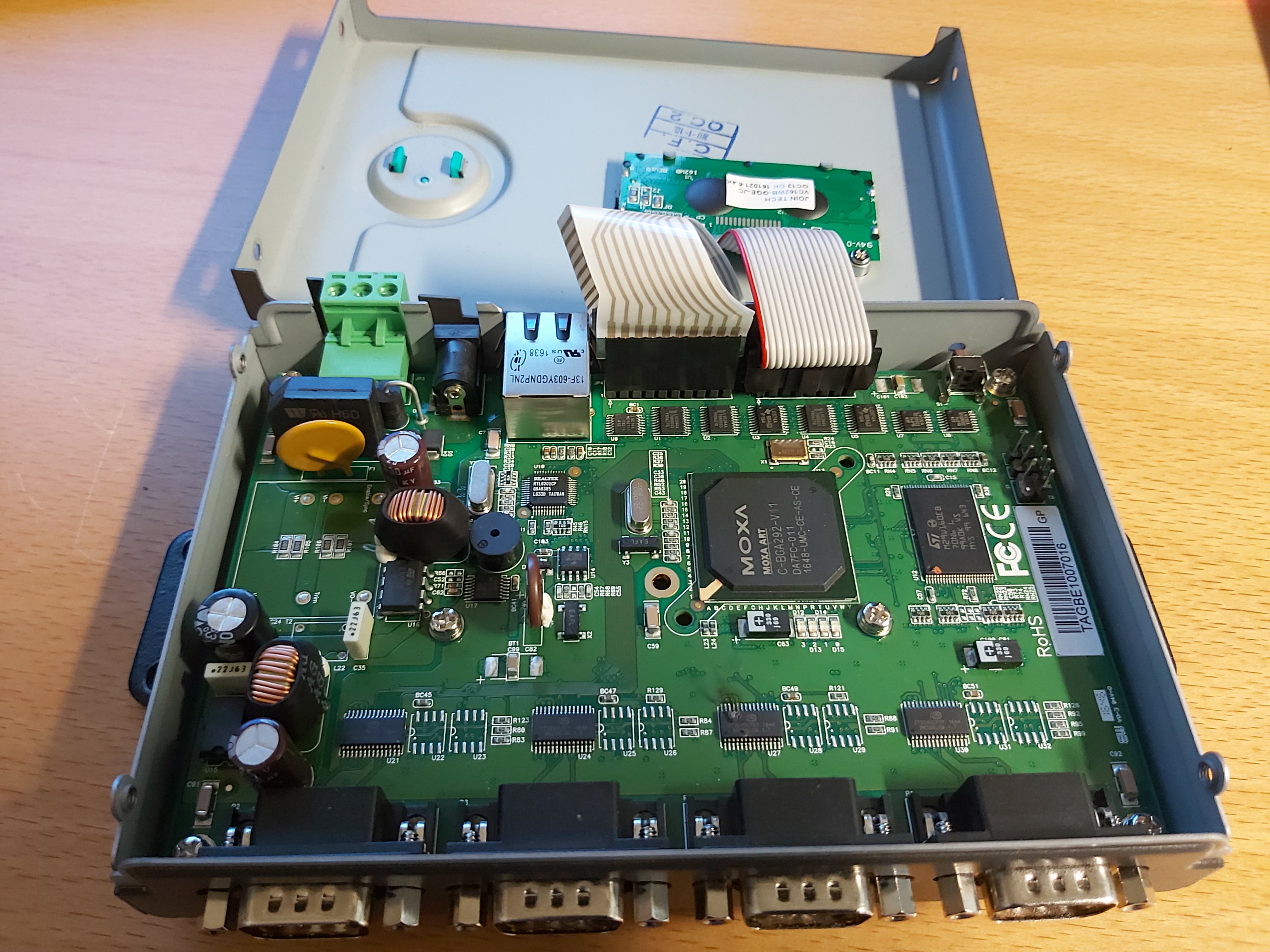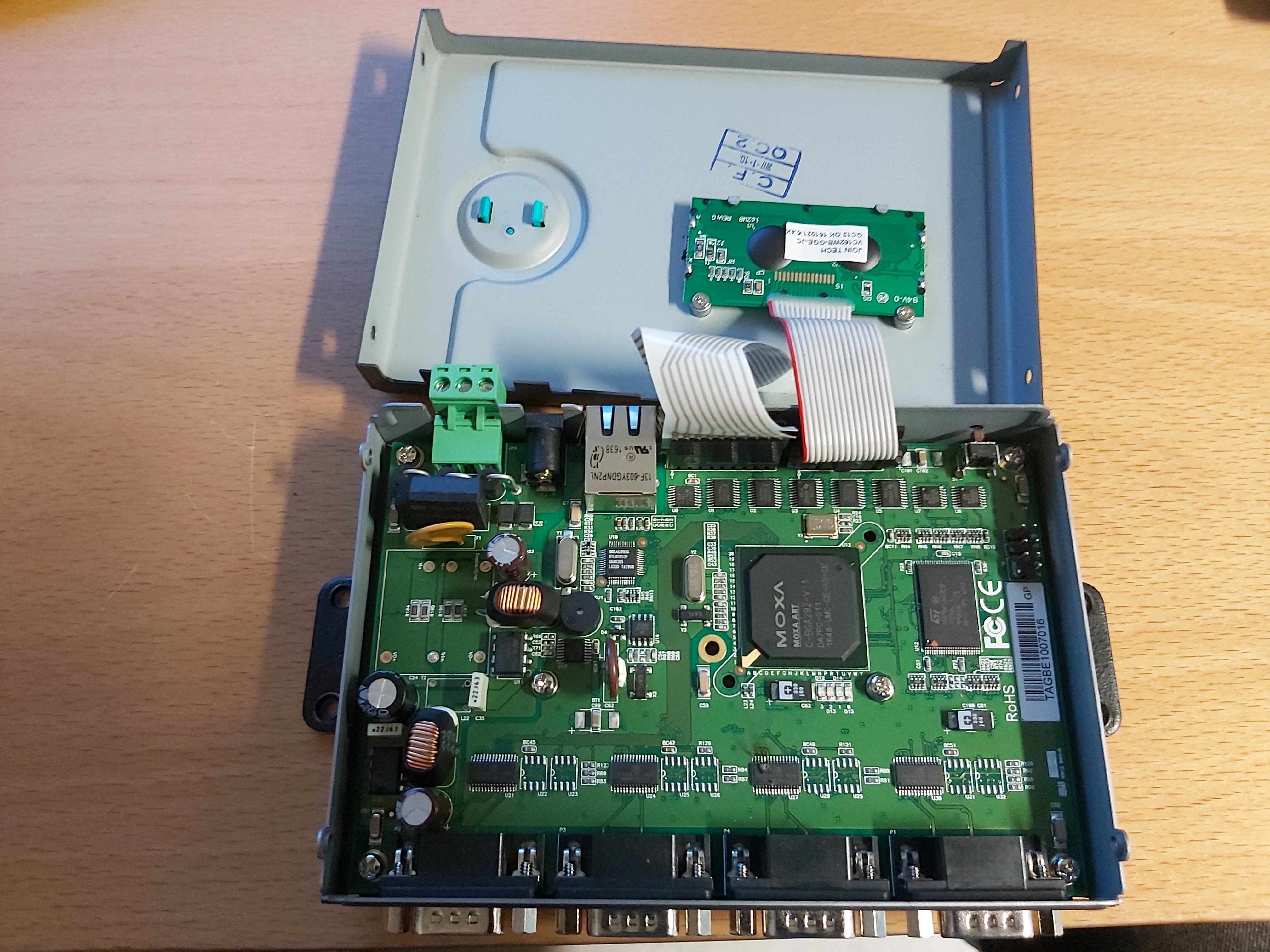NPort® 5400 device servers can connect up to four serial devices to an Ethernet network, allowing you to network your existing serial devices with only basic configuration. Data transmission between the serial and Ethernet interfaces is bidirectional.
To see what is inside we need to open it.
Take a closer look to see details.
On the top right corner is the device switch mode power supply circuitry. It looks to be non-isolated buck-type switch mode regulator. The power to it from power input connector goes through bridge rectifier (common in many Moxa products) and is protected against surges with a VDR. In many industrial electronics application I would rather see a power supply that provides isolation between power input. NPort® 5400 device servers support dual power sources by providing both a DC terminal block input and a DC power jack input.
Below it is the Ethernet connector and Ethernet transceiver. That transceiver chip seems to be Realtek RTL8211 that is a highly integrated Ethernet transceiver that is compatible with 10Base-T, 100Base-TX, and 1000Base-T IEEE 802.3 standards.
Next down in the CPU. The CPU of this device is based on now already phased out Moxa ART platform. MOXA ART is a 32-bit Arm9 industrial processor Moxa has used on many products that run Linux OS. I am not sure which OS is run on this device, but suspect it could be Linux.
On the left side the serial ports seem to have special line transceiver ICs that can implement all the needed operating modes (RS_232, RS_422, RS-485). The NPort 5400 Series provides adjustable termination and pull high/low resistors for RS-485 applications. In some critical environments. In this particular device it seem that one of the serial port transceiver IC has “exploded”.
On the case lid on the right you see the backside of the LCD operator panel and part f operating keys flexible circuit board.



0 Comments
Be the first to post a comment.